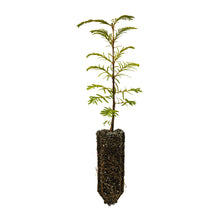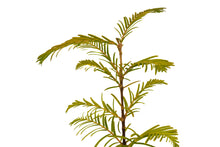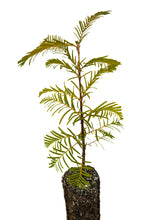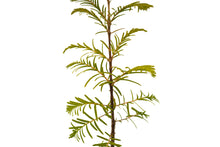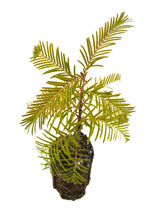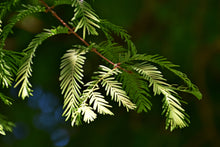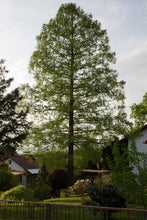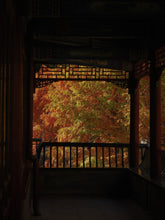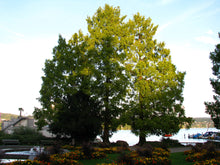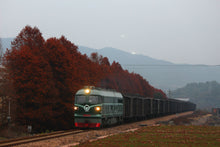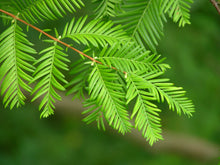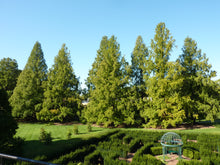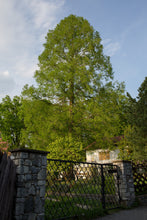
Metasequoia glyptostroboides
-
Grow your own Dawn Redwood, a living fossil from China
- 100% guaranteed
- Seed-grown on California's Redwood Coast
- Transplanting and care instructions included
 |
Moisture Medium |
 |
Cold Hardiness -25°F |
 |
Light Full Sun / Partial Shade |
 |
Size 50 – 160' tall / 20 – 25' spread |
 |
Lifespan 600 yrs |
 |
Growth Rate Fast Growing |
 |
Drought Tolerance Medium |
 |
Wind Resistance High |
About Dawn Redwood: A Gorgeous Living Fossil from China!
Until 1944, the Dawn Redwood (Metasequoia glyptostroboides) was known only in the form of fossils collected by paleobotanists. The fossil record made it clear to scientists that the Dawn Redwood had once been widely dispersed throughout the Northern Hemisphere during the Tertiary Period, with fossil remains collected in far-flung locations from North America to Asia to Greenland. The tree was thought to have been extinct for perhaps 20 million years!
That all changed in 1944, after a living specimen was discovered alive and well by a surprised Chinese forester near the remote village of Motao-chi in the Chinese province of Szechwan. As word spread of this discovery, botanists world-wide became intrigued. In time, The Arnold Arboretum of Boston and California's Save the Redwoods League sent expeditions to the area. The seeds and cuttings collected during these outings were shared with botanical gardens, universities, arboreta, and private nurseries around the world, and, today, this amazing "living fossil" is available from nurseries like Jonsteen.
In the years since its "discovery," Metasequoia glyptostroboides has proven itself as a remarkable and versatile ornamental, suitable for a wide range of climates and diverse planting situations. As an icon of conservation, only the Giant Pandas are more important to the Chinese people than Dawn Redwoods.
Mature Dawn Redwoods, like those occurring in China, are broadly conical, and grow to typical heights of 50 to 100 feet tall from thick buttressed trunks. The foliage is wonderfully soft, presenting different tones throughout the year, and the needles very closely resemble those of the Dawn's close relative, California's Coast Redwood. The largest Dawn Redwood tops 160 feet tall with a trunk approximately seven feet across – in stature and form very like California's redwoods, but smaller. The most striking difference between the famous California trees and Dawn Redwoods is that Dawn Redwoods are deciduous, shedding their needles each fall and sending out bright new growth each spring.
Dawn Redwoods are prodigious growers. Young plants can grow 3 feet or more in a year. In the landscape, Dawn Redwoods attract attention not only for their history, but for their lush and lovely, color-changing foliage and impressive redwood-tree form. Soft, bright green needles, about 3/4-inch long, appear in early spring, then turn pinkish brown before falling in the autumn. Brown cones 3/4-inch long ripen each year.
Dawn Redwoods are very cold hardy, easily handling temperatures into the -20°'s F. They can grow successfully in diverse settings and situations, but thrive best in full sun and moist soils. They are a good candidate for bonsai, and, although their growth is typically symmetrical, they are quite amenable to pruning and shaping.
Sorry, you cannot have a Giant Panda in your yard or garden, but you can certainly plant an incredible Dawn Redwood, China's other great icon!
About Jonsteen's Seedlings
All of our trees are seed-grown at our nursery on California's Redwood Coast, which is inspected monthly and licensed by the California Department of Agriculture. Trees can provide a natural barrier against high winds, temperatures, noise pollution and soil erosion, all while benefiting local air quality, wildlife and property values — a Jonsteen seedling will only grow in value and beauty!
About Jonsteen's 100% Guarantee
All of our trees are guaranteed to arrive healthy and in good condition. If your tree perishes despite your honest efforts, we will be happy to replace it with a small-sized seedling for just the cost of shipping/handling. You can learn more about our guarantee and tree replacement policy here.
Seedling Size Chart: Medium
Due to the dynamic nature of actively growing trees, as well as the tremendous variation between species’ growth rates, we rely on the cubic volume of a seedling’s root mass to determine its “size” (Small / Medium / Large / XL). Within each size there is minor variance — the dimensions provided here represent the category minimum. If exact measurements are essential, please contact us about current stock.















